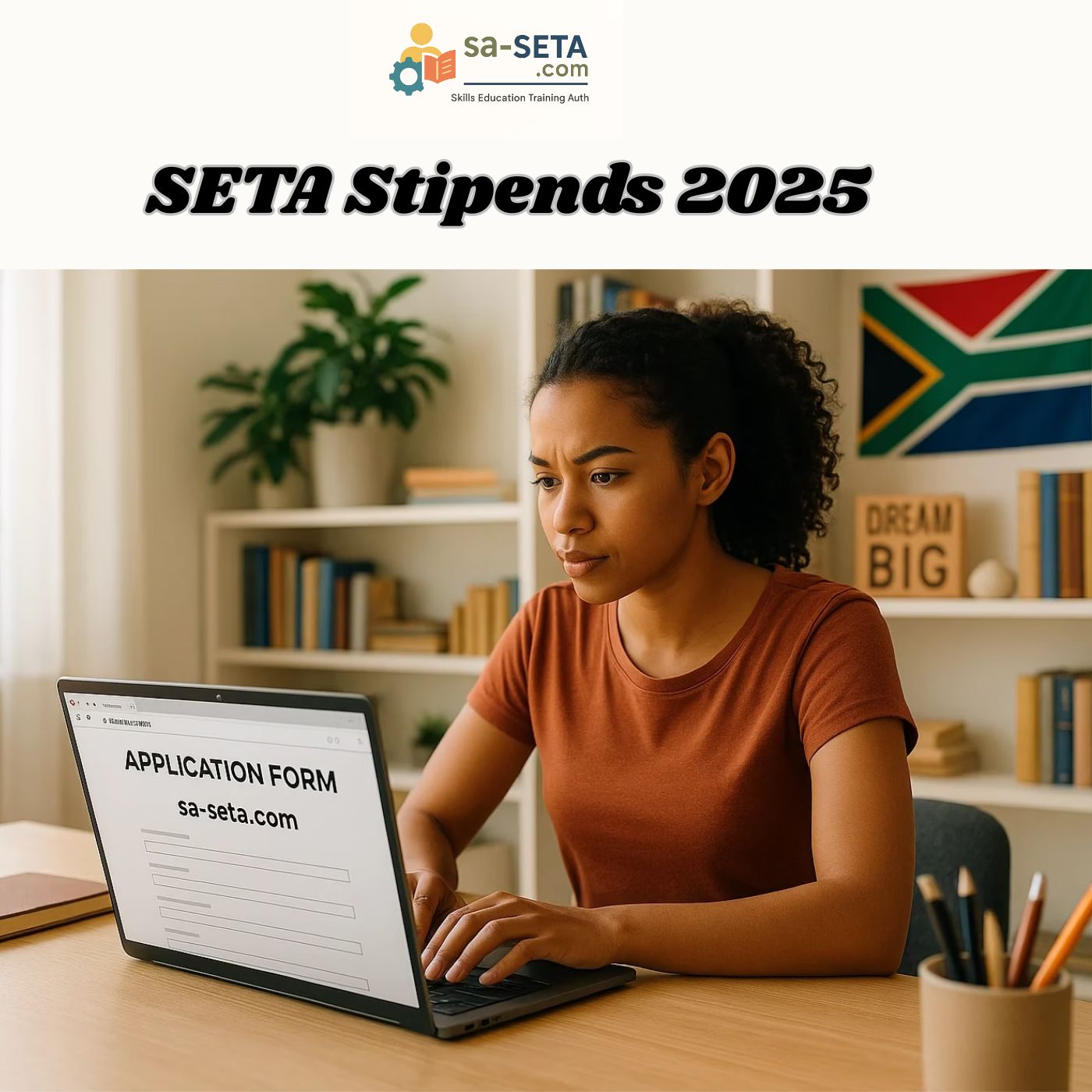In South Africa, the Sector Education and Training Authorities (SETAs) play a crucial role in bridging the gap between education and employment. One of the key incentives offered through SETA-funded programmes is the stipend—a financial allowance paid to learners, interns, and apprentices participating in various learnerships and internships. As we look ahead to 2025, understanding the SETA stipend ranges is vital for students, graduates, and jobseekers planning to participate in these skills development initiatives.
In this guide, we explore what SETA stipends are, the typical monthly amounts learners can expect across different sectors, factors influencing the amount, and how stipends benefit South African youth.
What Is a SETA Stipend?
A SETA stipend is a monthly allowance paid to learners enrolled in learnerships, internships, or skills development programmes funded by a SETA. These programmes aim to equip unemployed youth with workplace experience and theoretical training aligned with national qualifications.
Unlike a salary, a stipend is not considered a full wage, but rather a supportive grant to cover transport, meals, and other basic needs while participating in a programme. It’s important to note that stipend amounts vary based on several factors, including:
- The SETA involved (e.g., HWSETA, ETDP SETA, MICT SETA, etc.)
- The level of the qualification (e.g., NQF Level 1–7)
- The nature of the programme (learnership vs. internship)
- Sector-specific funding policies
- Budget allocations for the financial year
General Stipend Ranges in 2025
While SETAs do not follow a uniform stipend structure, several guidelines are commonly followed across most authorities. Based on historical data, 2025 projections, and recent recruitment adverts, here’s what learners can generally expect:
1. Learnership Programmes
Learnerships typically run for 12 months and combine classroom training with practical experience. The stipend range in 2025 is as follows:
- Entry-Level Learnerships (NQF 1–3):
R2,000 to R3,000 per month - Mid-Level Learnerships (NQF 4–5):
R3,000 to R4,500 per month - Advanced Learnerships (NQF 6–7):
R4,500 to R6,000 per month
These stipends are usually funded directly by the SETA or reimbursed to the host employer. In sectors like health or engineering, stipends might be slightly higher due to safety regulations or technical demands.
2. Internship Programmes
Internships focus more on work readiness and are often offered to graduates who have completed formal studies. The stipend range for internships in 2025 typically falls within:
- National Diploma Holders:
R4,000 to R6,000 per month - Bachelor’s Degree Graduates:
R5,500 to R7,000 per month - Postgraduate Interns (Honours or Master’s):
R7,000 to R9,000 per month
For example, the State Diamond Trader HR Internship 2025 offers a fixed annual package of R180,000, which works out to R15,000 per month—a relatively high-end internship stipend.
3. Apprenticeships
For trades like electrical, plumbing, mechanical engineering, or construction, apprenticeship stipends typically range from:
- R2,500 to R5,000 per month depending on year of training and trade type.
Examples of SETA-Specific Stipend Ranges
Here’s a breakdown of estimated stipend ranges based on popular SETAs:
| SETA Name | Typical Monthly Stipend (2025) | Programme Type |
|---|---|---|
| HWSETA | R3,500 – R5,000 | Health Learnerships & Nursing Internships |
| MICT SETA | R4,000 – R6,000 | ICT Learnerships & Digital Internships |
| FASSET | R5,500 – R7,000 | Accounting & Finance Internships |
| ETDP SETA | R3,000 – R4,500 | Educator/Facilitator Learnerships |
| AGRISETA | R2,000 – R3,500 | Agriculture & Rural Skills Training |
| MERSETA | R4,000 – R6,000 | Engineering, Artisan Training |
| W&RSETA | R3,500 – R5,000 | Retail Internships & Learnerships |
Please note: These are approximate ranges and may vary based on employer contributions or specific programme guidelines.
What Factors Influence the Stipend Amount?
The stipend amount a learner receives depends on a combination of:
- SETA Funding Policy – Some SETAs have minimum and maximum stipend thresholds that employers must adhere to.
- Employer Top-Ups – Companies sometimes add to the SETA-funded stipend to attract better candidates.
- Qualification Level – Higher NQF levels or degree-based internships generally offer higher stipends.
- Location – Urban areas with higher costs of living may offer slightly higher stipends.
- Industry Demands – In-demand sectors like ICT, finance, and healthcare may offer more competitive stipends.
- Duration – Longer programmes (18–24 months) may offer higher monthly allowances than shorter ones.
Benefits of SETA Stipends
While some may view stipends as modest, they provide essential support for thousands of young South Africans trying to gain meaningful work experience. Key benefits include:
- Covering Transport and Meals – Many learners travel long distances daily. A stipend ensures they can afford this.
- Reducing Financial Stress – Learners can focus on gaining skills without being forced to find side jobs.
- Increasing Participation – Financial support increases access to learnerships, especially for disadvantaged youth.
- Boosting Motivation – Even a small stipend gives learners a sense of value and reward for their efforts.
Learner Rights and Payment Expectations
Under South African labour law and SETA guidelines, all registered learners have the right to:
- Receive a written contract outlining the stipend amount.
- Be paid monthly on time, usually via bank transfer.
- Lodge complaints if payments are delayed or withheld.
- Receive UIF (Unemployment Insurance Fund) contributions if employed under a learnership agreement.
Know What You’re Worth in 2025
SETA-funded stipends in 2025 continue to provide a lifeline for thousands of unemployed youth entering South Africa’s skills development ecosystem. Whether you’re applying for a nursing internship with HWSETA, a digital skills programme through MICT SETA, or a facilitator course via ETDP SETA, knowing the expected stipend range helps you plan better and advocate for fair compensation.
Before enrolling in any programme, always confirm:
- The exact stipend amount
- Payment schedule
- Duration of the programme
- Employer obligations
With the right information and planning, SETA-funded opportunities can be a stepping stone to a brighter future.

